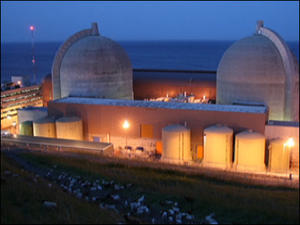Nuclear mattersU.S. reconsiders nuclear plant sites amid safety review
Following the nuclear crisis that occurred in Japan as a result of a massive earthquake and tsunami, the United States is undergoing a thorough safety review of existing plants that may affect where new plants are located; President Obama ordered the Nuclear Regulatory Commission (NRC) to conduct a comprehensive safety review of all nuclear plants in the United States; observers are particularly concerned with the Indian Point nuclear power station located forty miles north of New York City; if an accident were to occur, up to twenty million people, including eight million in New York City, would have to be evacuated

Nuclear power plant in California // Source: bakersfieldnow.com
Following the nuclear crisis that occurred in Japan as a result of a massive earthquake and tsunami, the United States is undergoing a thorough safety review of existing plants that may affect where new plants are located.
Appearing on Fox News Sunday, U.S. energy secretary Steven Chu said, “Certainly where we site reactors — and where we site reactors going forward — will be different than where we might have sited them in the past.” Last Thursday, President Obama ordered the Nuclear Regulatory Commission (NRC) to conduct a comprehensive safety review of all nuclear plants in the United States.
The president said, “We have seen an earthquake and tsunami render an unimaginable toll of death and destruction on one of our closest friends and allies in the world. And we’ve seen this powerful natural disaster cause even more catastrophe through its impact on nuclear reactors that bring peaceful energy to the people of Japan.”
He added the United States “has a responsibility to learn from these events.”
As crews struggled to cool overheating nuclear reactors at the Fukushima Daiichi nuclear plant, roughly 150 miles north of Tokyo, large radiation leaks were detected following explosions that may have cracked the containment units of several reactors.
Japanese officials have established a twelve mile evacuation zone and warned more than 140,000 residents living within a twenty mile radius to stay indoors.
Last Wednesday, the United States suggested a larger fifty mile radius.
Testifying before Congress, NRC Chairman Gregory Jaczko said that if a comparable incident were to occur in the United States, he would recommend a fifty mile evacuation zone.
This statement raised fears about nuclear power plants in the United States, particularly the Indian Point nuclear power station located forty miles north of New York City.
The Indian Point plant is located near two geological fault lines and Entergy, the plant’s operator, says that the facility is built to withstand a 6.0 magnitude earthquake. The earthquake that struck Japan and damaged its nuclear power plant’s cooling systems was measured at a magnitude of 9.0.
If an accident were to occur on a similar scale as Japan’s Fukushima Daiichi plant, up to twenty million people, including eight million in New York City, would have to be evacuated from the fifty mile radius.
On Sunday, when asked if the Indian Point plant should continue operation, Chu said, “We’re going to have to look at whether this reactor should remain.”
Chu added that evacuation plans will also have to reviewed.
Secretary Chu said that the decision on Indian Point was ultimately up to the NRC.
“It’s an NRC decision, but the NRC will be looking at that, I’m sure, based on the events” in Japan.
Jaczko said that the NRC is currently undertaking a “systematic and methodical” review to understand exactly what happened at the Japanese reactor.
“We will probably do some kind of short look in the near term just to re-examine the existing fleet of reactors and then probably a much longer look based on accurate information we get from Japan,” he said.
The United States currently operates twenty-three reactors that use the same design as the damaged reactors in Japan. Allaying fears, Secretary Chu said, “there have been upgrades in the safety of those reactors and that’s a process the NRC continues to do.”
Jaczko expects the review to be completed in less than a year and says that renewals of nuclear plant operating licenses will not be held up.
“We don’t intend to wait for (a) renewed license period. If there are lessons we need to learn, we will take those lessons and implement them right away if we need to. That would apply to all of the plants in the country, not just those that are similar to plants in Japan.”
Edwin Lyman, a physicist at the Union of Concerned Scientists, a nuclear watchdog group, urged greater caution and suggested that the NRC spend more time on ensuring the safety of existing reactors even if it meant delaying licenses.
“We would expect everything needs to be on the table. Nothing should be sacrosanct, including license renewals, even those that have been granted,” Lyman said.
